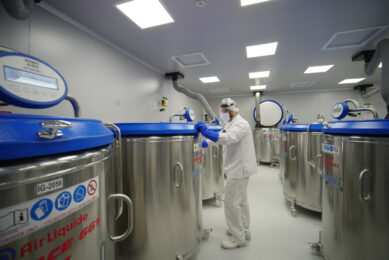PRRS requires combined effort of farmer and veterinarian
There are opportunities to the control of PRRS disease in pigs by using existing and new knowledge effectively, says the Dutch Animal Health Centre (GD).
According to new research, air plays a major role in spreading the virus. By combining expertise, pig farmers and veterinarians can make management efforts to keep this air spreading under control, GD says.
The PRRS virus can be spread by air up to 9 km. Air filtration is effective and will determine to a great extent whether the animals will get the infection or not, despite how good the health and biosecurity protocols are. Experience from the United States showed that air filtration is practical, prevents damage, is cost effective and one of the success factors for regional approach together with good management and vaccination.
Most damage caused by PRRS is in the form of vaccination and treatment. Pig farmers, veterinarians and animal health services such as the GD must therefore pursue a common approach.
PRRS was found in the Netherlands in the early 90s and is characterized by infertility in sows and respiratory problems in young pigs. The very pathogenic PRRS virus survives heat and drought and disinfectants are often very effective. Spreading occurs via nasal discharge, blood, saliva, urine, manure, milk and sperm and by humans through overalls, hands, trucks and mechanical transport. Flies can also spread the virus.
It is important to have an adaptation period for gilts when they are introduced at the farm. Furthermore, hygiene and to keep age groups separately is very important. Make sure that empty sections warm and dry and set hygiene requirements for visitors and trucks.
[Source: GD]











